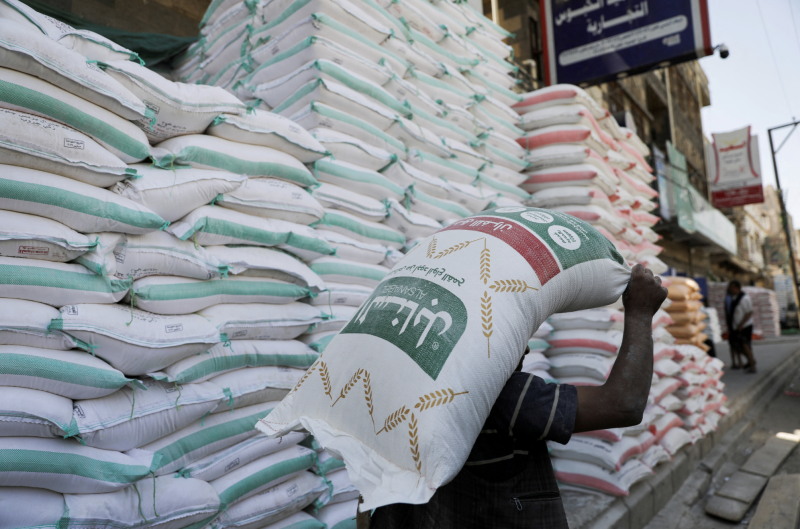Yemen: Multi-Cluster Location Assessment


Executive summary
People in Yemen have suffered the compounded effects of the war, ongoing economic crisis, and disrupted public services. Escalating conflict in 2021 resulted in civilian casualties, increased displacement and further disruption of public services, pushing humanitarian needs higher. Yemen’s collapsing economy – itself a product of the conflict – exacerbated vulnerabilities among poor families. More than 23.4 million people - almost three-quarters of the population- need humanitarian assistance and protection in 2022; an increase of 13 per cent from what was already a frightening figure in 2021.
A concerted effort has gone into improving data collection and analysis to inform the humanitarian programme cycle. The Multi-Cluster Location Assessment (MCLA) is one of the tools designed to enhance evidence-based humanitarian prioritization and resource allocation in the context of high needs and scarce resources.
The Multi-Cluster Location Assessment followed a coordinated approach with the engagement of all relevant stakeholders. The Assessment and Monitoring Working Group (AMWG) in Yemen led the designing phase of the assessment under the overall supervision of the Humanitarian Country Team (HCT).
Aid agencies and government counterparts jointly developed the MCLA data collection tool. A two-stage random sampling approach was used for data collection.
MCLA covered five population groups, i.e.,
IDPs, returnees, refugees, migrants, and non-displaced households.
Data was collected in two phases. The household listing was conducted in randomly selected locations during the first phase. During the second phase, detailed household interviews were performed using a structured questionnaire with randomly selected households. Data entry, cleaning, and analysis followed the standard principles.
The findings of MCLA highlighted several types of vulnerabilities and the specific needs of vulnerable populations. Among population groups, migrants and refugees appeared more vulnerable because of lack of access to basic services and humanitarian assistance. Other vulnerable groups include female-headed households, single women, elderly and child-headed households.
Sectoral findings highlighted the key issues and pressing needs related to shelter, water, sanitation and hygiene, health, education, livelihood and protection. Findings highlighted that majority of the refugees, migrants, and IDPs lived in rented houses and faced difficulties in managing the rent.
Some 57 per cent of the returnees and 44 per cent of the non-displaced household reported that their shelters are damaged and need repair. Most of the respondents also faced issues in managing the cost of non-food items, which were available in their nearby markets.
Access to safe drinking water was also limited and one-third of the households collect drinking water from unsafe sources.
Only 25 per cent of households have a water source available within the house. The remaining spent significant time collecting the water from the source. In addition, 80 per cent of the households have no means to treat the drinking water. Some 25 per cent of households had no access to a functional latrine. Out of those with access to a functional latrine, 9 per cent, primarily refugees and IDPs, had to use shared latrines. Availability of soap and water for safe hygiene practices was also limited.
When asked about garbage management, 43 per cent of households reported that there was no mechanism to collect and dispose of the garbage properly.
At the time of the survey, 40 per cent of the school-aged children were not going to school. The ratio of out-of-school children was slightly higher among IDPs, where 42.5 per cent of the displaced children were not attending school. Parents reported several barriers to providing their children with education, including the inability to afford the cost of education and transportation and the children’s engagement in household activities.
Long distances to the health facility, unavailability of the required type of service, and unaffordability are significant issues for the vulnerable Yemeni households to receive quality health assistance. Around 80 per cent of the respondents reported that they had to pay an exceptionally high amount, on average, YER 43,800, to get the required medical service. Even then, households were unsatisfied with the service provided, and 83 per cent of the respondents reported that health care services did not meet the household’s needs.
Around 15 per cent of the households reported having faced any type of abuse including abuse resulting from war or exploitation. The proportion of the people who faced abuse was slightly higher among refugees (24 per cent), followed by IDPs (19 per cent). When asked about the availability of protection services in the community, 44 per cent of the households reported that no protection service was available to them. Households also highlighted several constraints in accessing the protection services, including unavailability of required services, high cost to access the service or difficulty to access.
Access to stable income sources remains a challenge in Yemen, and in most cases, households have to rely on unstable sources. For instance, in 75 per cent of the households, at least one household member was engaged in day labourer activities for 30 days prior to the assessment. In addition, every three out of four households borrowed money a month before the assessment to fulfill their basic needs. Only 20 per cent of the households have at least one member with full-time employment, and 31 per cent have self-employment opportunities. Market access was also restricted due to long distances to markets, high transportation costs, and lack of fuel/transportation. Due to abridged income levels and reduced income sources, households adopt negative coping strategies. Three out of four households reported that they adopted a negative coping strategy in the past 30 days, including purchasing food on credit, reducing spending on other needs, looking for an additional income source, eating with other families due to lack of food at home, spending savings, and selling necessary domestic and productive assets.
Only 23 per cent of respondents confirmed that they received at least one type of humanitarian assistance, primarily food aid, during the past 30 days. Out of those who received assistance, only 25 per cent were satisfied with the quality of the services provided, half were partially satisfied and the remaining 25 per cent were not satisfied.
The survey respondents were also asked to outline the top three priorities from all of their needs. Livelihood support, food, cash, water, and health assistance were among the top needs.

Aden — Yemen Airways has announced new updates to its ticket cancellation (VOID) policy, introducing financial penalties on travel agents in…

Geneva – The United States announced that Yemen will not be among the countries benefiting from a new $2 billion funding pledge for United Na…

Paris — The French humanitarian organization Acted announced that it has delivered cash assistance to nearly 89,000 people affected by displa…